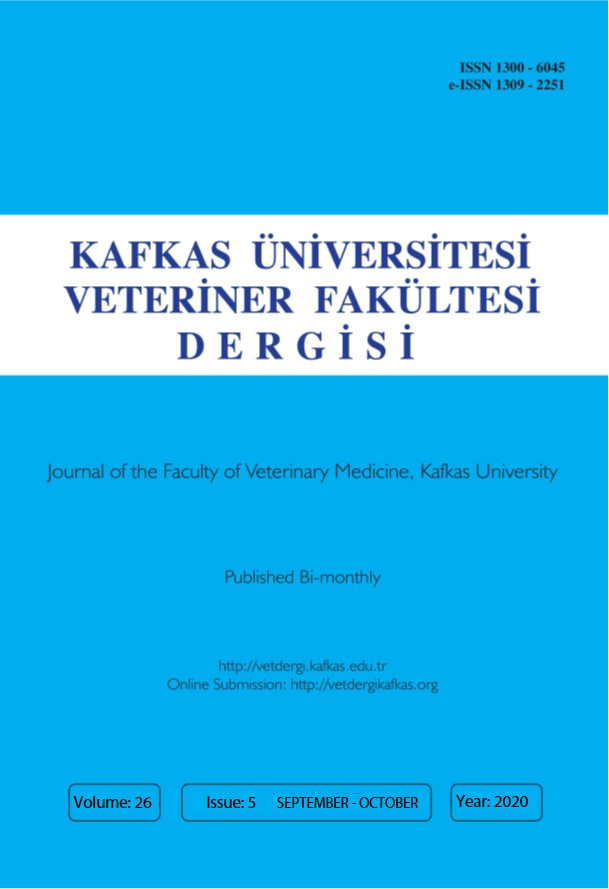
This journal is licensed under a Creative Commons Attribution-NonCommercial 4.0 International License
Kafkas Üniversitesi Veteriner Fakültesi Dergisi
2020 , Vol 26 , Issue 5
Rickettsia aeschlimannii and Wolbachia endosymbiont in Ctenocephalides canis from Eurasian lynx (Lynx lynx) Near the China-Kazakhstan Border
1Department of Veterinary Medicine, College of Animal Science & Technology, Shihezi University, Shihezi, Xinjiang Uygur Autonomous Region, 832000, CHINA2Department of Basic Medicine, School of Medicine, Shihezi University, Shihezi, Xinjiang Uygur Autonomous Region, 832002, CHINA
3Department of Parasitology and Zoology, University of Veterinary Medicine, 1112, Budapest, HUNGARY
4Department of Forestry, College of Agriculture, Shihezi University, Shihezi, Xinjiang, Uygur Autonomous Region, 832000, CHINA DOI : 10.9775/kvfd.2020.24080 Twenty-five dog fleas (Ctenocephalides canis) and five ticks identified as Hyalomma asiaticum were collected from a Eurasian lynx (Lynx lynx) pup in northwestern China. Molecular analyses of four genetic markers showed the presence of Rickettsia aeschlimannii DNA in 5 out of 20 fleas. Only rickettsial 17-kDa gene was detected in the blood sample of the lynx. In addition, 2 out of 20 fleas were positive to Wolbachia endosymbiont by targeting 16S rDNA while there was no Bartonella DNA found both in 5 ticks and 20 fleas by using gltA and 16S-23S ITS. Our findings suggest that i) C. canis parasitizing wild Eurasian lynx harbors R. aeschlimannii and Wolbachia endosymbiont in the China-Kazakhstan border, and ii) Wolbachia endosymbiont in present study is closer to that in C. canis infesting sheltered dogs in Turkey. Keywords : Eurasian lynx, Ctenocephalides canis, Hyalomma asiaticum, Rickettsia aeschlimannii, Wolbachia endosymbiont










